5 Best Strike Indicators of 2024: Tested and Honest Review
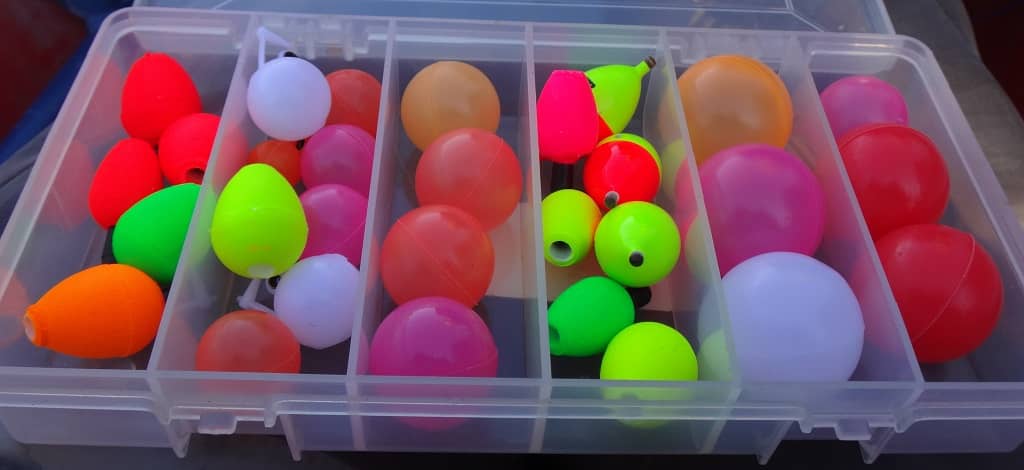
As a fly angler of 38 years and a guide for 22 years, I think I have tried just about every indicator ever made. In my opinion, 85% of indicators on the market I wouldn’t use even if the company gave them to me for free.
That’s because I use my strike indicators for more than just detecting a bite. I use them to control the speed of my fly and to control the angle of my leader, which enables me to catch ten times more fish. Unfortunately, most indicators do this poorly, and only a few do it well.
If you use the right indicator and learn to use it for more than just strike detection, you can also catch ten times more fish!
We may make a small commission from some of the links on this website, which is at no cost to you. I appreciate your support. Learn More
So What Makes A Great Strike Indicator?
Fly fishing indicators are used when nymph fishing in rivers, but what makes some good and others bad?
The best indicators for fly fishing will:
- Cast well.
- Float high.
- Be the right size and shape.
- Be highly visible.
- Be sensitive enough to detect a subtle bite.
- They should also help you catch more fish in two ways.
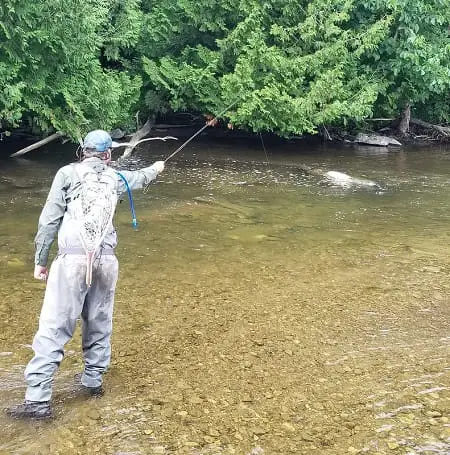
How does an indicator help you catch more fish?
Good indicators help me catch trout, steelhead, and salmon.
Even the color of the indicator matters.
Best Strike Indicators Quick Picks
- Raven Float – BEST OVER-ALL: Best for advanced anglers and guys who want to learn how to use an indicator for more than just strike detection.
- Oval Bi-Color Indicators – Best Traditional Strike Indicator – Good for advanced anglers and guys who want to learn how to use an indicator for more than just strike detection. My Recommendation is the Lightning Strike Bi-Color Football Indicator.
- Yarn And Wool Indicators – Best For Subtle Presentation: These land softly for a more subtle presentation, they are good when casting in the wind, and they don’t spook fish, they are also good for subtle takes, and are very good for smaller streams. My favorite is the New Zealand Indicator.
- Putty Indicators – Easy On and Off: Easily adjustable, easy to put on and take off, good for lighter subsurface flies. This is my go-to indicator for teaching effective indicator fishing. The best is the Loon Outdoors BioStrike Putty.
- Round Indicators – Most Popular and Best Sellers: These indicators ride high on the water’s surface, even in rough water. They are good for fishing small streams, good for beginner anglers, good for heavier flies, and they won’t get pulled underwater even with extra split shot. The best is the Oros Strike Indicator.
- Foam indicator: Used by many anglers, easily visible, good indicator size selection. Check out Carlisle Foam Indicators
5 Things A Good Strike Indicator Will Do For You
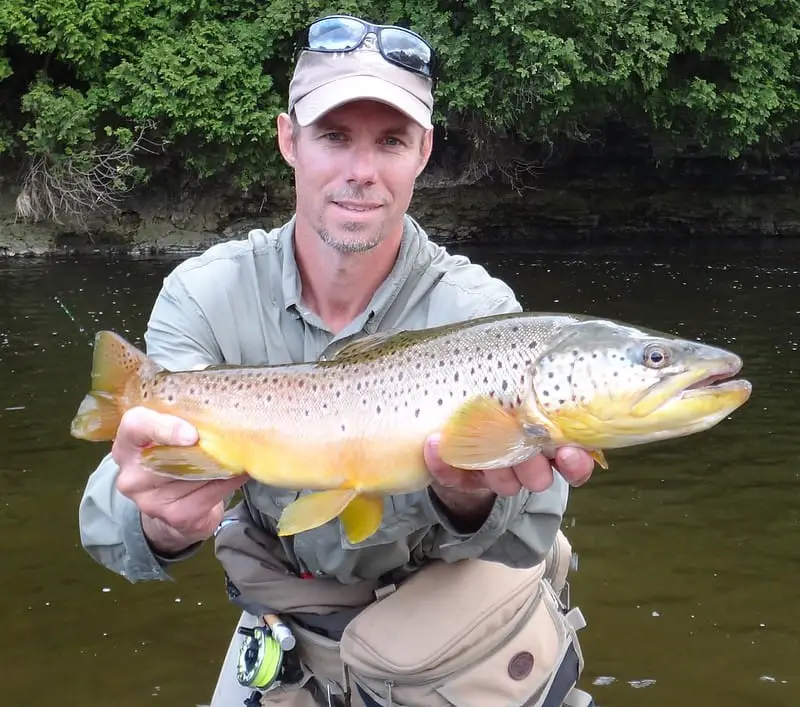
I learned a long time ago that when my client’s nymphs moved too fast they caught very few fish.
I had to figure out how to fix this so they could catch more fish like I do.
I determined then that some indicators really help improve your speed and your presentation, while others don’t.
I believe that the best fly fishing indicators need to be functional and not just detect bites. They should be able to improve your presentation. This is what the best one can do for you.
- They will help you control your speed and your depth, which will help you get more bites.
- I use them to help me detect the bottom so I can have my fly in the right spot without dragging my fly along the rocks.
- They help me control my leader angles below the indicator, which will also improve my speed control and improves strike detection.
- They help me gauge where my fly is at all times, which is important for bite detection.
- They enable me to detect the most subtle strikes and help with catching fish.
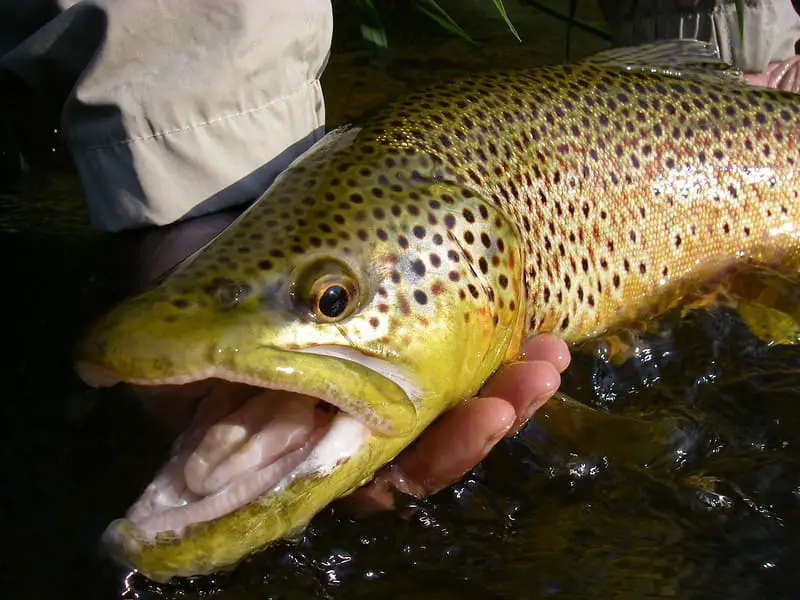
Guide Tip: try not to use bright-colored indicators in clear water less than 3 feet deep; it can spook fish. Instead, use a white indicator because it looks like a bubble and won’t spook fish.
I get into more detail about how to fish with each of these indicators on my page Nymphing with Indicators.
Speed Control Really Matters
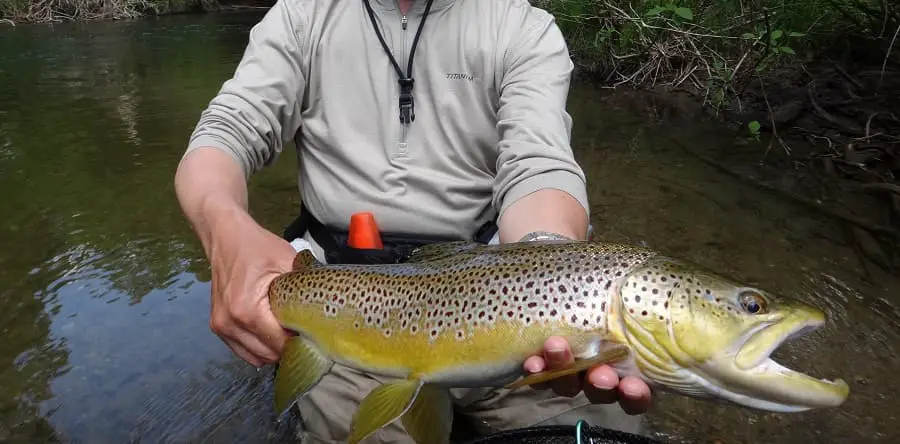
Most of the world’s best competition fly anglers DO NOT use indicators. They use Euro Nymphing methods with a colored line called a Sighter. They do this so their flies sink deeper, sink faster, and the flies don’t get dragged unnaturally fast by an indicator on the surface.
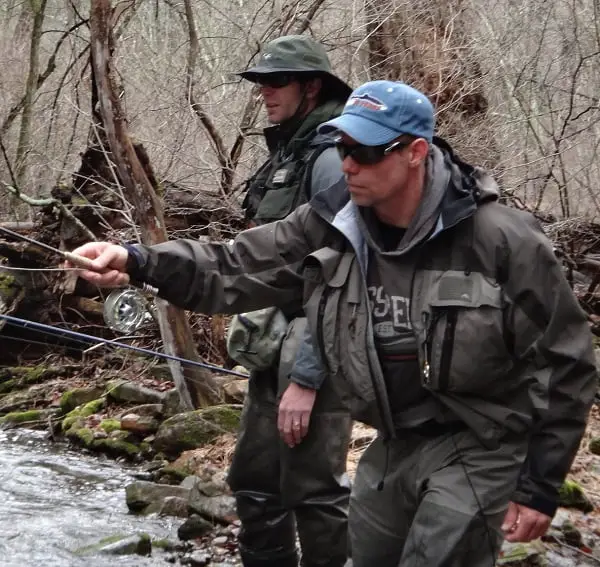
They know that a fly moving too fast can spook fish. So, good anglers who use indicators learn how to control their fly speed better.
Indicators can also slow the descent of the fly, especially if you do not maintain leader angles well.
1. Raven Floats: The Best Indicators For Fly Fishing
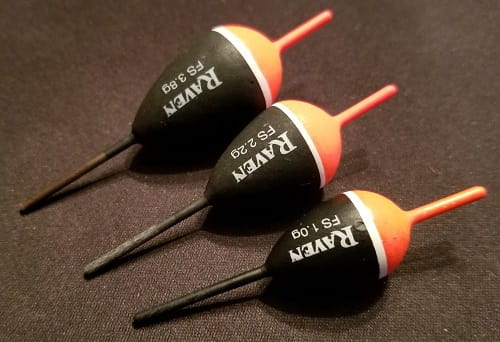
This float-style indicator is a far cry from the most popular indicators on the market, but if you want an indicator that can actually help you catch more fish, and not just float high, cast well, and detect bites, then this truly is the best indicator for fly fishing.
After all, an indicator is nothing more than a “bobber” regardless of what it looks like or what it’s made from, so if you are going to use a “bobber”, you might as well use one that will help you catch more fish.
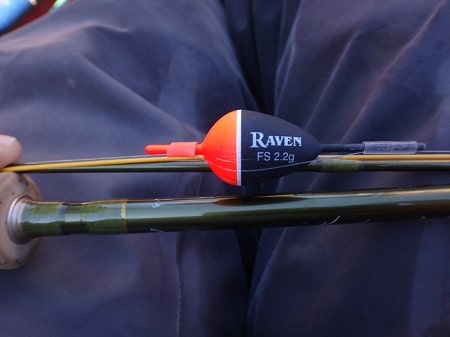
The Raven float can’t be beaten in certain situations when it comes to improving your presentation and your ability to catch more fish.
The difference between the Raven Floats and all the other indicators is how it sits on the water and its pointed tip.
The pointed top helps you judge your depths better by detecting the bottom better, it helps you determine any drag in your drift, it helps you control your speed, and it helps to control your angles, which enables you to better gauge where your fly is.
I explain all this in detail in my article on Controlling Your Speed When Nymphing.
The more popular round indicators, single color indicators, and the yarn indicators that I have used can NOT do this as well.
This indicator is best when used on bigger rivers of 15 to 60+ feet wide and in spots of three to ten feet deep.
Pros
- Highly visible
- Stands upright with a pointed top for functionality
- Floats well
- Easily to adjust the depth
- Easy to put on and to replace with larger or smaller sizes
- Best indicator for improving your presentation
- Sensitive bite detection
Cons
- Only comes in orange
- A bit bulky
- not good on spooky fish in clear water (most indicators aren’t)
- Not wind resistant or good for long delicate casts
- Doesn’t look like a standard indicator
- Not good in water depths of 3 feet or less
Best Sizes – For small trout rivers, with not much weight on the leader and small nymphs, I like to use the Raven FS, 1.0g float.
For smaller steelhead rivers or bigger trout rives where not a lot of weight is required, I prefer the Raven FS 2.2g float or the FS 3.8g float.
For larger steelhead and trout rivers where a lot more weight is required, I will use the Raven FS 3.8g float. This is often my go-to size for Great Lake’s steelhead.
Where To Get It – Look for the “Fast Current – Shallow Depth” model, which is also known as the FS float. You can get the Raven FS Floats at FishUSA.com – HERE
You will also need to get these Drennan float caps to secure the float to the line, and so you have extra.
2. Oval Bi-Color Indicators – THILL Floats
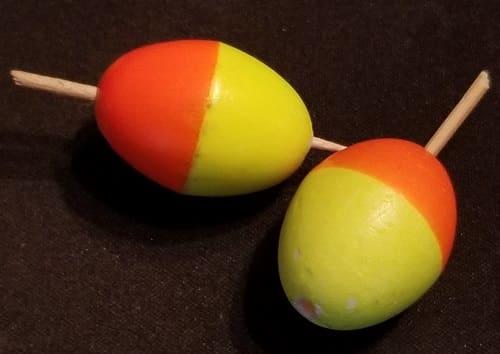
I like oval-shaped bi-color indicators like the ones from THILL.
I think these are some of the best indicators for fly fishing because they can add function to your presentation and can help you catch more fish, especially if you know how to fish them properly, see my Indicator Nymph Fishing page for that.
The THILL Brand indicators have been around for a long time, and they are my second choice behind the Raven floats for the best indicators for fly fishing in most river conditions.
Even though they do not have the pointed tip like the Raven floats, I use them to teach anglers how to nymph fish better using the two colors.
Because of their football shape and the two colors, the THILL floats can also help you with your speed, your angles, fly placement, bite detection, and bottom detection better than some other indicators.
The Bi-color lets you know approximately where your fly should be, and it’s not difficult to figure out if you check out my page on Indicator Nymphing:13 Tips You Need To Know.
These THILL indicators are good in small to large rivers and in spots from 2 feet to 10+ feet deep.
Sizes: I use the 1.5-inch size for steelhead and the 7/8 size for trout. If you like to use a lot of weight, go with the 1.5-inch size.
Pros
- Bi-color and shape give you more control
- Lightweight
- Cast well
- Float high
- Easy to adjust the depth
- Good in fast water
Cons
- Only one color option
- Pegs get lost easily, so have lots of toothpicks handy
- You have to cut the line to put it on and take it off.
- It can land hard on the water and spook fish
NOTE: Recently, the Thill Ice N Fly indicators have been hard to get. I’m not sure if this is a supply issue or if they have been discontinued. Two similar indicators that I like and use are:
- Lightning Strike Bi-Color Football Indicator: Another good indicator similar to the Thill indicators.
- CorQs Tactical Indicators are another bi-color indicator that I like, however, it has a different shape it still works great.
- Carlisle Foam Indicators – The Thill indicators are hard to find, but these come in larger sizes and work similarly. However, these can also be hard to find and they are a different shape.
3. Yarn And Wool Indicators: The Best Indicators For Stealth
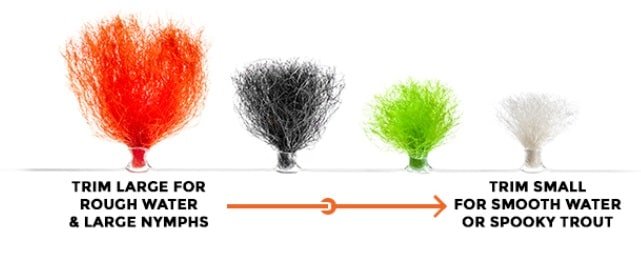
One of the best indicators for fly fishing when you need a subtle presentation, and stealth is the yarn indicators from the New Zealand Strike Indicator Wool and tool system. The New Zealand indicator is made from new Zealand lambs wool.
The New Zealand indicator system was designed to fish the gin-clear waters of New Zealand for its nervous trout, and they are meant for casting longer distances so they have less wind resistance than other indicators.
I like to use wool or a yarn indicator when fishing low clear water or when fishing slow clear water, and this is the best yarn rigging system.
The downside to using wool is that it will not help you control your speed or help you determine where your fly is below the surface, but in low and slow water, that is not as important.
These wool indicators cast as well as a large dry fly, and it lands gently on the water when compared to other types of indicators.
You can make these wool indicators smaller or larger depending on how much wool you use and how you trim it.
Pros
- Lands gently on the water.
- Comes in white, which looks like a bubble to weary fish.
- Floats well in slow water and light ripple water.
- Makes many different sizes.
- Casts well, even with long dry fly type of casts.
Cons
- Not good with heavy flies.
- You need to dress it with a floating.
- Not good is fast rapids.
- This yarn indicator attaches with a rubber tube, so the tube and applicator are required.
You will need to dress most yarn and wool indicators with a floatant to keep them from absorbing water and to keep it buoyant longer. The green can Mucilin is popular: get it at FishUSA.com-HERE. The red can Mucilin also works, and so does Loon’s Payette Paste, which is available in many stores.
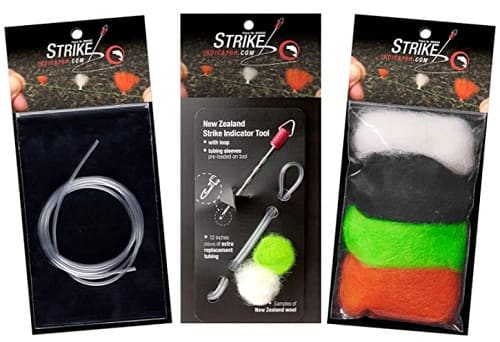
You can get the New Zealand strike indicator combo pack, which includes all the tools at Amazon – HERE. You can also buy the wool separately at Amazon.
Buy the New Zealand Strike Indicator Kit at Trident Fly Fishing,
.
Buy the replacement wool at FishUSA.com – HERE
To see how this works and how to attach it, go to the official New Zealand website.
4. Putty Indicator
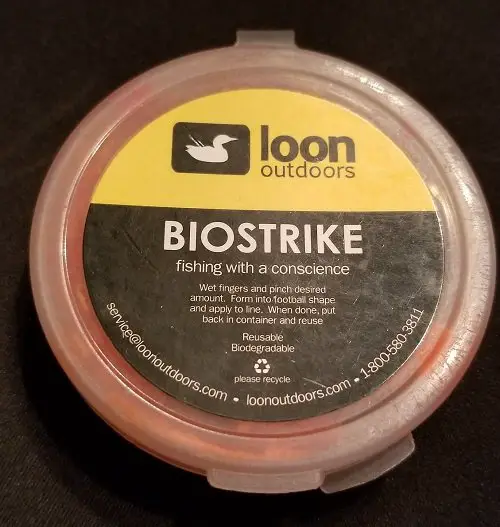
I use the putty indicator a lot, but not in the same way that other anglers use them or the way they are intended to be used.
I sometimes add a small piece of putty above the leading indicator and then run two indicators at a time. This is one way I could teach anglers about the proper angles and teach them how to determine where their fly is.
I also use the putty on my sighter indicator when euro nymphing. This helps see the sighter better in tough light conditions
Lastly, I may use a very small piece of putty about 24 inches up the line when using super small size 20 or smaller dry flies so my clients can get an idea of where to look for the take of the dry fly.
It does leave a bit of residue on the line, which I just rub off with my shirt, but it always comes off in the wash, but do so at your own risk.
The putty comes in a few colors.
For indicator putty, I use the Loon Outdoors BioStrike Putty Strike Indicator which you can get at HERE
Pros
- Goes on easily.
- Make it any size you want.
- Floats good.
- Is reusable.
- Comes in a few good colors.
- Has a glow-in-the-dark color available.
Cons
- It can be sticky on your hands and lines.
- Falls off eventually.
- Gets really hard in very cold weather.
5. Round Indicators: Good For Bite Detection But That’s All
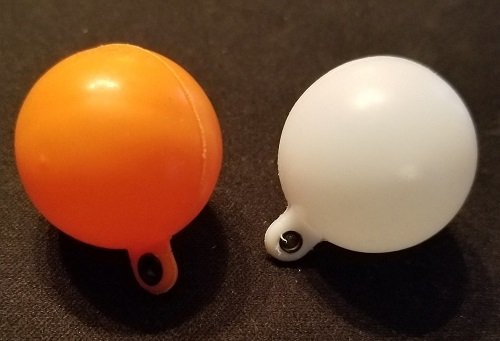
Despite being the most popular strike indicators on the market, and the ones that are most recommended by other websites, and also by stores, they are not the best, and I’m not a fan of any of the round single-color indicators.
Round indicators can come in balloon-style filled with air or are made from cork or balsa wood.
There is a lot to like about these indicators, which is why they are so popular.
They do float high, they can cast pretty well, they are easy to put on and take off, they work well with split shot, and are decent if you are constantly adjusting, and they do detect a strike well, so why don’t I think they are the best indicator?
Simple, this type of indicator won’t help you control your speed very well, and they don’t work well for detecting the bottom or to tell you that you are dragging your fly, and they are definitely not good for determining your angles or helping you determine where your fly is.
The only time I will use a round indicator is if I’m fishing very shallow and fast water or water that’s so slow it’s almost still.
If you want to give these a shot, the three best are:
Most Other Indicators Kinda Suck
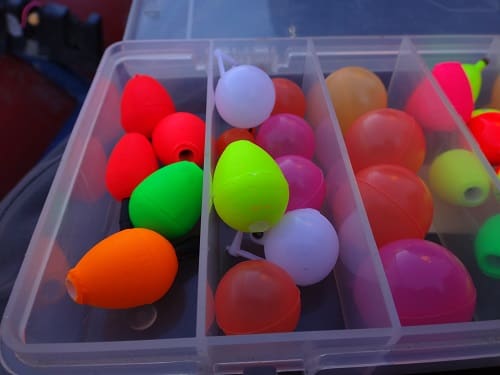
There are tons of indicators on the market with all kinds of different shapes, sizes, and colors, and they can be made from many different materials.
They don’t really suck, they’re just not my preferred indicators for various reasons.
Some pinch-on, some are teardrop-shaped, some have rubber tubbing in the middle, some have a rubber or metal ring, some twist-on, some are yarn with little rings on them, some are foam, and some are even disposable twist-on.
Yes, they all work to indicate that you might have a bite, and most of them can suspend your fly too, some land softly, some are better in windy conditions, and some are float higher.
If you want to check these out, here they are:
- CorQ Cork – I do like the fact these are bi-color. It’s just too bad they are round, but they do float like a cork.
- ETRE Sports Yarn – A decent yarn strike indicator, however, I’m not a huge fan of the colors.
- Dongyue Stick-On Indicators – These are really old-school. I think I’ve used these over 30 years ago. They are disposable, not adjustable, and won’t hold heavier nymphs, I’m not really sure why other websites would recommend these (but they do). I would never recommend them or use them.
- Sunshine Fishing Foam Oval Slip-On Indicators – I used to use these a lot when I was younger, they’re not bad, however, they pop off and float down the river too much for my liking.
- Andux 12 Piece Foam Indicators – A foam indicator version of yarn indicators.
If you have a question about the best fly fishing indicators, let me know in the comments below.
Tight Lines,
Graham

I’m not a fan of indicators but I truly hate indicators with a stick or protrusion like your two favorites. Reason being increased tangles
To be honest, based on years of observation, most tangles are caused by angler error in their lift, cast, and mends and not by the indicator itself. The key is maintaining a straight line throughout the cast with a lob-type cast. However for a new angler, the downside to an indicator with a stick is maybe a few extra tangles, but the upside is that if you utilize the stick to help you achieve proper anglers and to allow you to control the speed of your bait it will allow to to catch more fish.
I’ve been using the football style indicators from frog hair that are line through and secure with bobber stops. Going to try the new corqs for some of my winter steelhead slower holes.For the most part the football style indicators force you to know where your fly is making you closer to becoming proficient with a sighter or tight line. For me I’ll stick to the indicator it’s simple and effective and an effective method in my smaller local tributaries.
What would your thoughts on Jaydacators or CorQ indicators be? Do you find that larger extremely buoyant indicators tend to drag nymphs along the bottom faster than they should? If so how do you correct the issue?
Hi Nick,
All indicators, big or small, that are fished in moving water will cause drag due to the upper current usually being faster than the bottom current. Usually, the bigger the indicator the more the drag. You can try to correct drag with proper mending and/or by high sticking through your drift while slightly holding your indicator back. It’s difficult to explain and it’s difficult to do, but it can be done. The reason that I use the Raven floats as indicators is to help me determine if there is drag and to teach my clients to detect it and to correct it using mending, high stick, or a pullback method.
I hope to have a video demonstrating how to do this later this year.
Graham
I have some shallow fast Blood Run floats that are 5grams. Do you think this amount of weight will still be castable on my 11ft 7wt switch with anadro line? I have some 3.8 gram ones, curious if there is a reason to use less weight?
Switch rods are pretty powerful so I don’t see why you would not be able to use a 5 gram float. Let me know how it goes.
I always use a dry fly as an indicator. This is mainly for the fear of missing out on a fish. This means sometimes my dry fly is ridiculously big or just a far cry from what the fish are eating. That doesn’t mean it doesn’t work though, just less productive then a more natural dry.
What’s a good dry fly and nymph combo?
I like fishing dry and nymphs at the same time on lakes and rivers. I’m now thinking smaller more natural dry fly, nymph and wool to locate the small fry with my awful eyesight. But then the smaller fry may sink….
Dry flies as indicators can be effective as well as long as your dry fly/indicator doesn’t sink from the weight of the nymphs. There are plenty of good dry fly dropper comb nations. I tend to use the closest to matching the hatch or the natural flies from the river or lake.
Good Luck
Graham